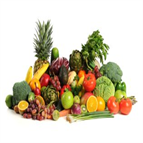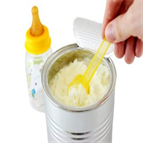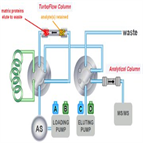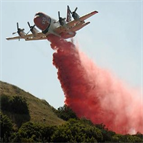Find methods for your needs
Refine by Feature
Displaying 1-5 of 13 results for Tag: TSQ
Multi-Residue Pesticide Analysis in Herbal Juices using GC-MS/MS
Instrument Type: GCMSMSThe Thermo Scientific™ TSQ™ 8000 Evo triple quadrupole GC-MS is an excellent tool for the control of MRL levels in food commodities. The enhanced velocity optics (EVO) driving EvoCell collision cell technology provide high SRM transition speeds, precision, and sensitivity for even complex methods involving several pesticides in a short run time. This application is focused on the analysis of 247 compounds in two different herbal juices, Aloe vera and Amla (Indian gooseberry), demonstrating the potential of the method to detect trace level compounds at concentrations as low as 1-2 ng/g.
Comparing LC and GC Triple Quadrupole MS for the Screening of 500 Pesticides in Matrix
Instrument Type: LCMSMSModern pesticide analysis is extremely challenging due to the diversity of compounds required to be reported, especially in the area of food safety control. The pressure to report large numbers of pesticides quickly makes it attractive to use large single injection methods. Triple quad MS has emerged as a primary screening technique due to its high sensitivity and selectivity against matrix. Presented is a comparison of both LC and GC sample introduction techniques coupled to triple quad MS screening of over 500 pesticides at ppb levels.
Measurement of Vitamin D in Milk and Infant Formulas Using Automated Online Sample Preparation with Liquid Chromatography/ Tandem Mass Spectrometry
Instrument Type: LCMSMSVitamin D, including vitamin D2 and D3 (Figure 1), is essential to calcium absorption and bone health. Current studies suggest vitamin D could help prevent a wide range of disorders. Although vitamin D can be synthesized by the human body from exposure to sunlight, fortification in some dietary sources becomes necessary. We describe an easy and comprehensive LC-MS/MS method using a Transcend TLX-1 system powered by Thermo Scientific TurboFlow technology to measure vitamin D levels in infant formula. TurboFlow technology eliminates most traditional sample preparation steps.
Advances in Automation of Food-related Analysis and Screening
Instrument Type: LCMSMSWorldwide food safety concerns have risen dramatically as the number of food contamination incidents and product recalls has increased. Every food analysis starts with sample preparation, which is widely accepted as one of the most critical steps of LC/MS. Increased demand for higher throughput, accuracy and lower matrix interference from food analysis laboratories has made sample preparation the largest bottleneck. Turbulent flow chromatography technology can eliminate the need for lengthy offline sample preparation steps, thereby eliminating these disadvantages.
Detection and Quantitation of Brominated and Chlorinated Hydrocarbons by DART with Linear Ion Trap and Triple Quadrupole Technology
Instrument Type: MSMSBrominated hydrocarbons (BFRs) have been used in various industries for decades. Most chlorinated pesticides (OCs) have been banned in the United States, but their use still occurs in developing countries. The persistence of BFRs and OCs in the environment, potential deleterious activity, makes the detection and monitoring of these compounds an important topic. We propose DART as a simple, rapid, easy-to-use technique; eliminating the need for chromatographic method development, and reducing or eliminating sample preparation, for detection and quantitation of both BFRs and OCs.





